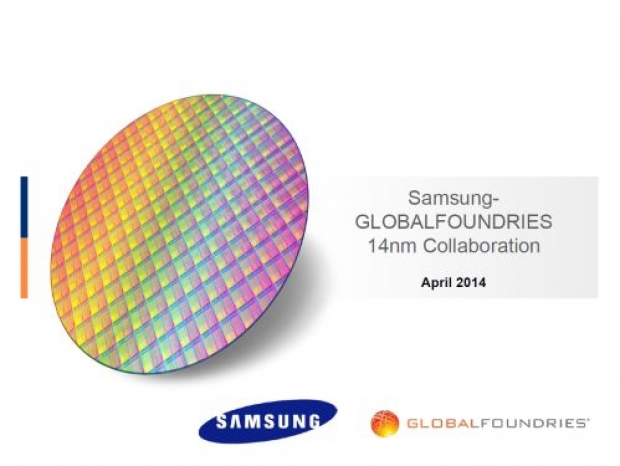The Exynos 7420 SoC will be a 14nm octa-core, with four Cortex-A57 cores and four slower Cortex-A53 cores. Most of the chips coming in 2015 will use ARM's big.LITTLE approach, but in 20nm. Samsung Exynos 7420 is 14nm and is also using Mali-T760 GPU. We have the manufacturing node confirmed by multiple sources but you only need to wait for the March 1 to see the official announcement at the Mobile World Congress Galaxy S6 launch event.
Qualcomm's Snapdragon 810 was the main candidate for the Galaxy S6, since Qualcomm has the best LTE modem on the market. However, Samsung pulled out from using the chip, sparking rumours that it was overheating. However it turns out that Samsung is simply happier with what it had in-house, and therefore decided to use the Exynos 7420 14nm octa-core instead. There is a chance that Samsung might use an external chip from Qualcomm, just as Apple does for iPhones.
The fact that Exynos 7420 SoC is 14nm means a few things. Samsung / GlobalFoundries 14nm manufacturing is in better shape than most people expected, as the Galaxy 6 is expected to sell in tens of millions of units this year. This is not some risk production 14nm for a low-volume phone that will sell in hundreds of thousands. Samsung trust its manufacturing capabilities with its best-selling, flagship phone.
Samsung is beating both Apple and Intel to market with a smartphone 14nm SoC. Apple is expected to use 14nm A8 with the new iPhone / iPads, but this traditionally happens in September / October. We expect to see Intel 14nm SoC showcased at Mobile World Congress but we are not sure who will use it. Intel had trouble getting high profile mobile phone manufactures interested in its smartphone technology.
From what we can see in early benchmarks, the 14nm Exynos 7420 won't be much faster than the 20nm Exynos 5433 predecessor in any tests except in 3D. It turns out that you can expect more than 20 percent faster graphics and significantly faster runtime test in AnTuTu. The 14nm SoC should be good in terms of battery life too, as 14nm should need 35 percent less energy to work at the same clocks. Samsung is promising that its 14nm LPE (Low Power Enhanced) manufacturing process can give some 20 percent of performance increase compared to 20nm SoCs.
The 2015 will be an interesting year for phones as Samsung has a new weapon and the rest of the industry has to rely on Snapdragon 810 or MediaTek processors for 2015 performance and high end phones.




